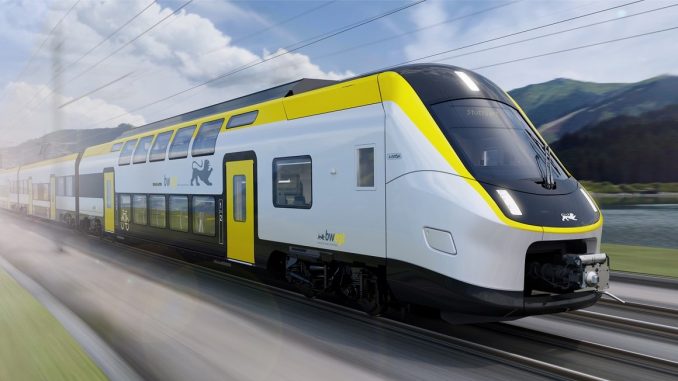Alongside the contracts in Italy and Denmark, the contract with ARF, signed in Romania, strengthens Alstom’s position in the EMU market, says Brahim Soua, head of Alstom’s regional trains portfolio.

According to alstom.com, he explained why Alstom’s Coradia regional trains are so popular in Europe and how the company’s broad product portfolio is adapting to regional operators’ evolving demands for alternative traction technologies and greater automation.
“There are two major reasons why our Coradia regional trains stand out; the first is that we have a broad market reach, and this can be seen in our recent successes in several European countries from Spain to Norway. The second reason is that we optimise total cost of ownership (TCO). It is not just the selling price, there are also energy costs and maintenance costs that feed into the total cost of ownership. These two reasons make our portfolio strong enough to win contracts across Europe,” he said, according to the website.
Alstom’s contract with ARF strengthens its position on EMU market
“With the Coradia Stream Pop contract in Italy and the contracts with ARF in Romania and DSB in Denmark, we are strengthening our strong position in single-deck EMUs,” Soua said.
Over the past five years, the regional market has been worth around EUR 9 billion a year and is expected to grow by 1 or 2% a year over the next five years. Typically, 45% of the market is made up of single-deck EMU trains, 35% high-capacity EMU trains and double-deck trains and 20% XMU trains with zero direct emissions. “Alstom is currently the market leader in this segment and we are in a good position to maintain our leadership. There is no doubt that we will continue to produce both single-deck and high-capacity trains, as the future of both markets is very bright,” Soua added.
According to him, the company also wants to make progress towards autonomous trains, “we already have driverless trains in metro networks, for example,” he says.
Alstom plans to move towards completely emission-free solutions. “We will continue to improve them as part of our alternative traction offering. We will also focus on healthier mobility and creating an even better passenger experience in the coming years. Alstom has successfully developed various hydrogen-powered solutions for regional trains, for example the Coradia Stream Hydrogen for Italy and the Coradia iLint. Our hydrogen traction solution can thus be adapted to several different train models, but we also have other zero direct emission options such as battery traction,” said Soua.
The company has a contract with Verkehrsverbund Mittelsachsen (VMS) in Germany for 11 Continental BEMU Coradia. Alstom continues development to create bi-mode electric-hydrogen solutions. “We are working on autonomous trains, with two ongoing research and development programmes, one in France and one in Germany. We also have several train contracts in the pipeline, such as the Omneo train with SNCF and CFL in Luxembourg and Baden-Württemberg in Germany for the high-capacity Coradia Stream trains. They are already at what we call GoA2, the first level of autonomous train, so they have a driver on board, but a lot of the operation is automated, for example starting and stopping the train. The future is 100% autonomous, or GoA4, and that is what we are working on in our research and development programmes. Reaching level 4 means providing automatic mode for door closure, operation in case of interruption and the right level of safety to avoid any possibility of accidents. This involves installing cameras as well as sensors and managing and interpreting this data,” he says.
Share on:



